8 Steps To Losing Weight Fast By Eating More And Doing Less
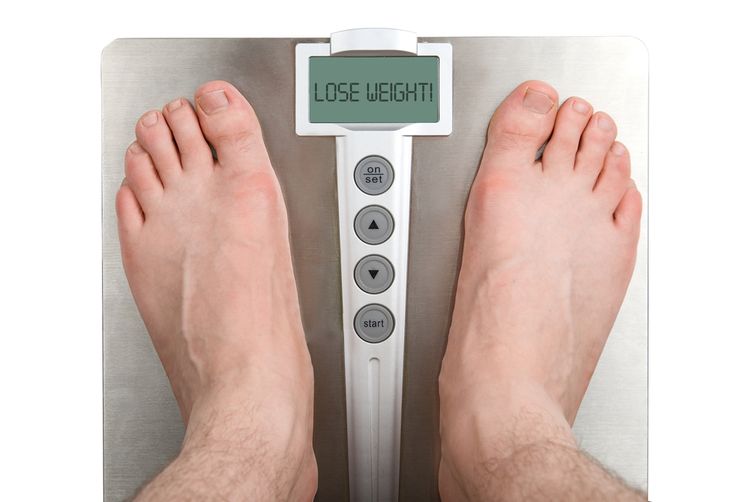
There’s a message that’s been steadily broadcasted for years: “Eat less, exercise more, and you’ll lose weight.”
So you think the only way to experience fast weight loss is through liquid fasts, starvation diets, skipping meals, and hours of grueling exercise.
What if you, and the 60% of other Americans who are overweight or even obese, have been getting the wrong message for years? You’ve tried low calorie diets, low fat diets, and hours on the treadmill, but you can’t seem to lose weight.
New research is revealing that the types of foods you eat matter more than the calories they contain, and that the specific manner in which you exercise yields more results than the time you spend doing it.
Essentially, if you want to lose weight quickly without acting like a crazy person, you’ll need to eat smart, not less, and exercise smart, not more.
Here’s how to do it.

Forget Everything You’ve Been Told About Weight Loss
In 1977, the low-fat guidelines were first published, and the government and health organizations began to tout the virtues of cutting the fat from your diet.
In the wake of these changes came a high-carb diet, with the government food pyramid building a foundation for “good nutrition” on grains, breads, pastas, and other carbohydrates.
Manufacturers reduced the fat in their products to appeal to consumers but replaced it with super palatable sugars. According to the CDC, between 1980 and 2000, obesity rates doubled among US adults and children, and tripled among adolescents.1
Today’s nutritionists, health practitioners, and dieticians have a brand new set of guidelines to help you lose weight:
- Reduce or eliminate sugar
- Eat more protein
- Eat more fat
- Eat more vegetables
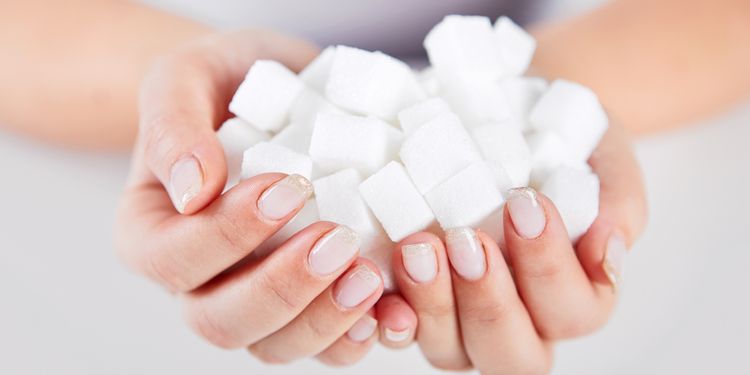
Step #1 – Reduce or Eliminate Sugar
The one thing that’s guaranteed to keep you from losing weight quickly is sugar.
Sugar is made up of two molecules: glucose and fructose. When you eat sugar, your body produces insulin, a hormone that encourages your cells to take up glucose for energy (glucose is your body’s preferred source of energy). Extra glucose that’s not needed is stored in the liver as glycogen for later use, or is metabolized into fat. Fructose is sent directly to the liver, where it gets metabolized into fat and returned to the bloodstream.
Dr. Mark Hyman describes the particular kind of fat that comes from eating too much sugar: “Once you start to consume refined carbs, such as bread, rice, potatoes, pasta, and any form of sugar, you start making a certain kind of fat cell called VAT or visceral adipose tissue. This is no ordinary fat. It’s super fat. Hungry fat. Dangerous fat. This fat starts an inexorable cascade that leads to obesity.”2

“Here’s what happens. Those hungry fat cells suck up all the available fuel in your blood stream (glucose, fats, ketones). Your body then thinks, ‘Oh my god, I’m starving. I better eat more and slow my metabolism so I don’t die.’ The problem is, anything you eat gets sucked up into those fat cells around your belly, leading to a vicious cycle of hunger, overeating, fat storage, and a slowing down of your metabolism. No wonder we gain weight and can’t lose it.”2
When insulin goes down, your body starts burning fats instead of carbs. In addition, lowering insulin levels will help your kidneys to release excess stores of sodium and water, leading to a quick loss of water weight as well as body fat.3
Need more reasons to ditch sugar? According to Dr. David Katz, sugary foods have a higher satiety threshold, which is the amount of food that you need to eat in order to feel satisfied. “That’s why it’s so easy to munch your way through a box of cookies or polish off a pint of ice cream in one sitting.”4
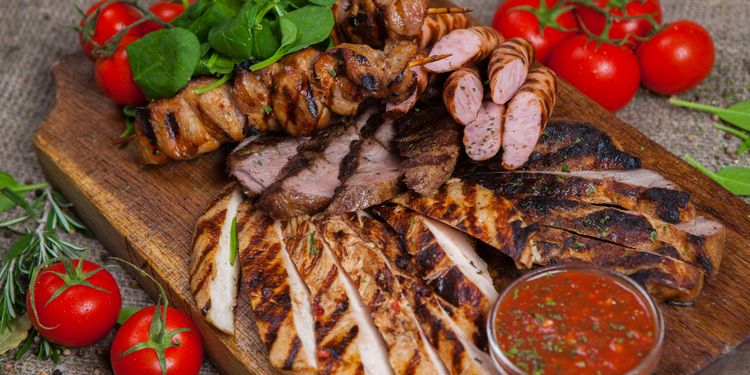
Step #2 – Eat More Protein
When it comes to foods that can help you lose weight quickly and without hunger,
protein is king. Several studies have suggested that a high protein diet can help with weight loss and fat loss.
Eating more protein can:
Increase satiety: In one study, overall satiety and metabolic rate was compared for 24 hours. The high protein group reported higher satiety than the high fat group. In another study lasting 16 weeks, high protein subjects reported greater satiety than high fat subjects.5
Reduce hunger: Increasing protein has been shown to decrease hunger. In one study, subjects reported a clear decrease in hunger and increase in fullness, which resulted in a constant rate of weight loss.6

Reduce food cravings and thoughts: In one interesting study that looked at protein and perceived appetite and satiety during weight loss, the high protein subjects reported reduced late-night desire to eat and less preoccupation with thoughts of food.
In addition, these high protein subjects reported the same improved satiety and improved appetite control that has been found in similar studies as well.7
Boost metabolism: Protein is considered a thermogenic food, meaning it increases resting energy expenditure in the body. In real people terms, this means that eating protein increases your metabolism. Many studies have shown protein to increase resting metabolic rates higher than fat or carbohydrates.8
Adding protein to every meal is an easy way to help lose weight fast. Sources such as organic eggs, beef, bison, chicken, turkey, fish, elk, and other game animals, as well as plant protein from hemp, peas, and beans are great ways to boost protein consumption.

Step #3 – Eat More Fat
For years, fat was vilified and stripped from our foods. Low-fat and nonfat foods were touted as the answer to weight loss. It’s time to reacquaint yourself with fat.
Healthy fats have many benefits, one of which is taking longer to digest than proteins and carbohydrates.
“Welcome fat back to the table in the form of extra-virgin olive oil, coconut oil, nuts, seeds, free-range eggs, wild fish, and grass-fed beef,” advises Dr. David Perlmutter.9
Dr. Perlmutter’s reasoning for using healthy fats for weight loss is this: “Researchers conducted a 12-month interventional study comparing a high-fat low-carb diet to a diet focused on reducing fats while at the same time offering up higher levels of carbohydrates…. The results demonstrated that those women on the high fat low-carb diet lost more weight than those on a low-fat program.”10
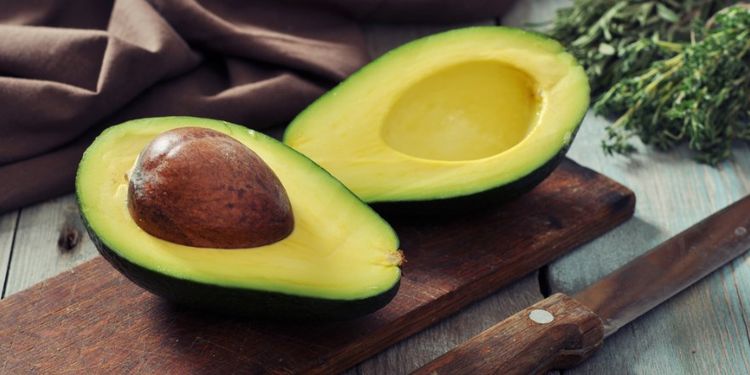
Dr. Mark Hyman explains why we should ignore the old advice to eat a low-fat diet. In a nutshell, “Eating a high carb, low fat diet slows down your metabolism.”11
In a study that followed 100 men and women on four different diets, results showed those on a high-fat diet experienced statistically significant weight loss, even after a year.12
The types of fat you eat matter when it comes to weight loss. A review on the association between types of fat consumed and weight revealed dietary short- and medium-chain fatty acids appear to promote weight loss in animals, compared to long-chain fatty acids.
Specifically, monounsaturated fatty acids (MUFAs) appear to favor weight loss compared to saturated fatty acids (SFAs) in human studies.13 What types of foods have MUFAs? Healthy fats come from healthy foods! Monounsaturated fatty acids are found in healthy plant foods such as avocados, olives, nuts, seeds, and the oils made from these foods.

Step #4 – Eat More Vegetables
Are vegetables the secret to fast weight loss? Studies have shown that increasing fruit and vegetables can help you achieve weight loss and maintenance.14
In addition, increasing fruit and vegetable consumption has been shown to help prevent weight gain in overweight adults.15
Vegetables and fruits are a great source of dietary fibers. According to Dr. Perlmutter, “Fiber-rich foods increase the sense of fullness, and that helps reduce overall food consumption.
More importantly, foods containing a special type of fiber, prebiotic fiber, cater to the healthy gut bacteria, expanding their numbers and enhancing their positive influence on your health.”16
Dr. Mark Hyman has an even simpler explanation for the weight loss effects of vegetables. “If you eat more fruits and vegetables, you’ll be eating less junk and creating health through hundreds of other mechanisms. In fact, the only thing all nutrition experts agree on is that we should eat more fruits and vegetables.”17
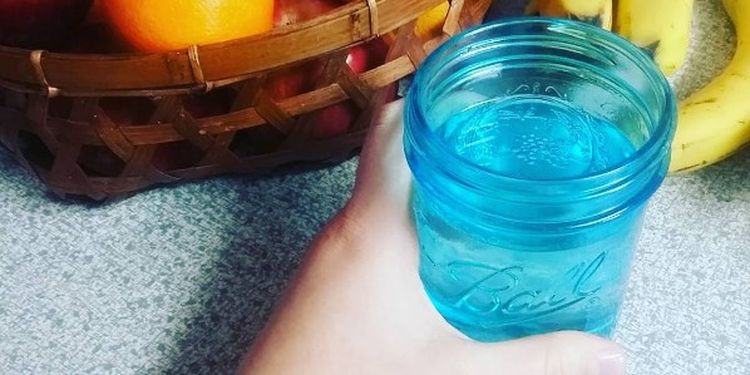
Step #5 – Drink More Water
Your body is comprised of over 70% water, so it should come as no surprise that water is the ideal beverage when you’re trying to lose weight.
The worst mistake you can make when trying to lose weight is to drink your calories by consuming juices, diet sodas, sports drinks, or “enhanced” waters. Regular water has zero calories and is always sugar-free.
The effect of water on weight loss has been studied, and a review on water and weight loss revealed that:
- People who maintain weight loss drink more servings of larger portions of water.
- Drinking more than 1 liter of water a day resulted in greater weight loss.
- Drinking more than 1 liter of water a day resulted in a greater reduction of waist circumference.
- Replacing sweetened beverages with water significantly reduced weight, body fat, and waist circumference.18
If you want to drink something other than water, black coffee or tea may also help speed up weight gain. Caffeinated beverages such as coffee and tea have been shown in studies to boost metabolism.19 Remember not to add dairy or sugars to your coffee or tea, and keep in mind that when it comes to weight loss, water is the clear winner.

Step #6 – Exercise for Less Time with Higher Intensity
Have you ever felt like you need to spend hour after hour at the gym, running on a treadmill, or pedaling a stationary bike in order to see weight loss results?
You can actually get weight loss results even faster by exercising for less time if you use High Intensity Intermittent Exercise (HIIE), also known as High Intensity Interval Training (HIIT).
HIIE exercises consist of brief periods of all-out high-intensity exercise, followed by a recovery period of low-intensity exercise or rest.
An example of this may be sprinting as fast as you can for 30 seconds, followed by 60 seconds of a slow jog or walk, then repeating the sequence. The length of sprint and recovery periods in HIIE can vary anywhere from a few seconds to a few minutes at a time.
Whether it’s running, cycling, swimming, weightlifting, or something else, most forms of exercise can be done as HIIE exercises.
Studies that looked at the effect of HIIE and subcutaneous and abdominal fat loss revealed that as few as three 20-minute HIIE sessions a week resulted in losing significantly more subcutaneous fat than those in the steady state aerobic exercise program after 15 weeks, as measured by skin folds. HIIE also significantly reduced abdominal fat after 15 weeks.20

Step #7 – Include Strength Training Workouts
When you want to work out for weight loss, you may think that cardio is the ticket to shedding pounds fast.
Cardiovascular workouts such as jogging, running, swimming, and cycling can burn many more calories per hour than lifting weights.
Adding resistance training to your workouts, however, can actually increase and accelerate your weight loss efforts. Here’s why.
Strength training increases resting metabolic rates.21 When you’re done with your workout and go home to relax on your couch, strength training will increase your metabolism for as much as 36 hours after your workout. That means you burn more calories in every activity you perform, even resting and sleeping.
Strength training burns fat. Strength training exercises such as weight lifting increase type II muscle fibers. Researchers have found that increasing these particular muscle fibers leads to a decrease in fat mass and overall body mass.22
Including strength training exercises such as weight lifting in your day will help you lose more fat, improve your metabolism, and accelerate your weight loss.

Step #8 – Get More Sleep
The easiest way to quickly lose unwanted weight is to crawl under the covers and get more sleep.
Experts recommend seven to nine hours of sleep each night for adults, but according to a recent Gallup poll, 40% of American adults average only 6.8 hours every evening.23
Missing those important hours of shut-eye can have detrimental effects on your ability to lose weight. A long-term 16-year study followed 68,000 women and found that those who averaged five hours of sleep or less were 15% more likely to become obese.24
Researchers believe sleep impacts weight loss by:
Increasing hunger: Sleep deprivation has been linked to an increase in the hunger hormone ghrelin and a decrease in the satiety-inducing hormone leptin.25
Increasing snacking: Lack of sleep often leads to increased snacking, particularly on higher carbohydrate foods.26
Getting seven to nine hours of sleep each night is an easy way to help lose weight. To make sleep a priority, schedule it into your daily routine just like you would exercise.

A Sensible, Sustainable Approach to Weight Loss
You don’t have to count calories, subscribe to a food delivery service, attend meetings, pay for a coach, drink a liquid diet, do a cleanse or detox, or live on pre-packaged bars and frozen meals to lose weight quickly.
You also don’t have to dedicate eight hours a day to the gym or start training for a marathon to see the numbers on the scale start to move in a favorable direction quickly.
You can eat a satisfying amount of whole, nutritious food as long as you cut out sugars, reduce carbs, increase your protein, eat plenty of healthy fats, and drink lots of water.
This alone is enough to bring on weight loss. Your weight loss efforts will be amplified even further, though, if you take 20 minutes three times a week to do some High Intensity Interval Exercises and include strength training exercises into your workout routine. Finally, make sleep a priority every evening, aiming for seven to nine hours each night.
This practical approach to weight loss is not only sensible, it’s also sustainable.
It’s not a fad diet, it’s sound science supported by studies and medical professionals who know—you can lose weight fast by eating more of the right foods and exercising intelligently, not excessively.
